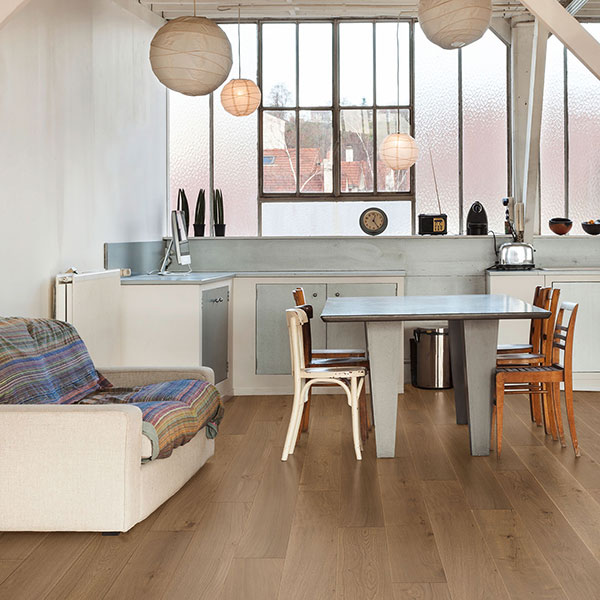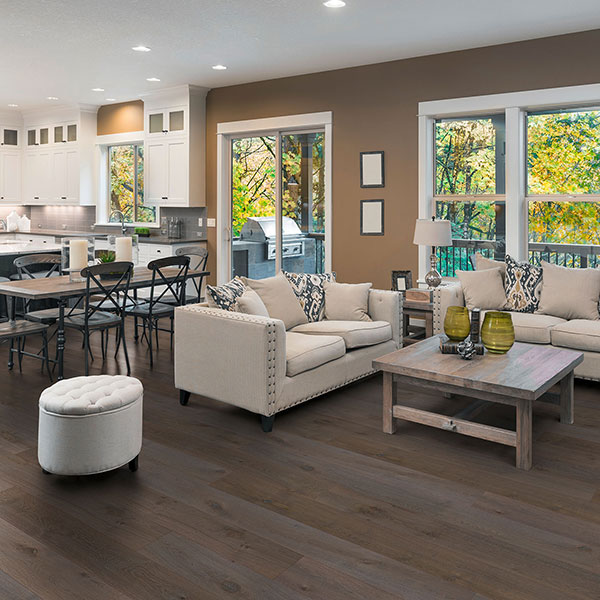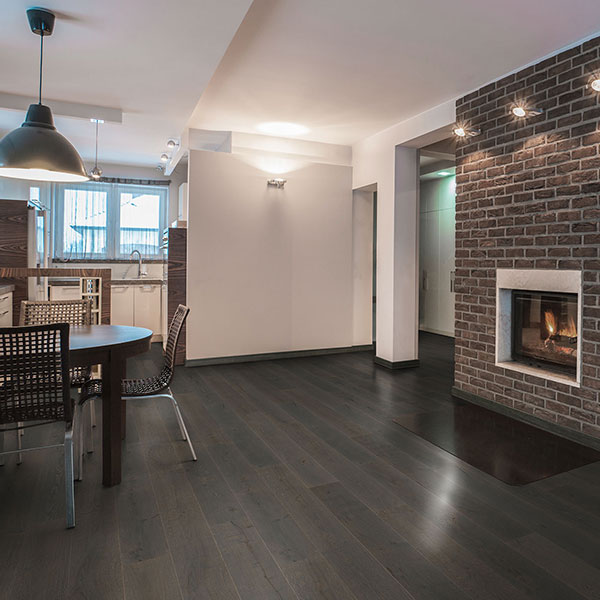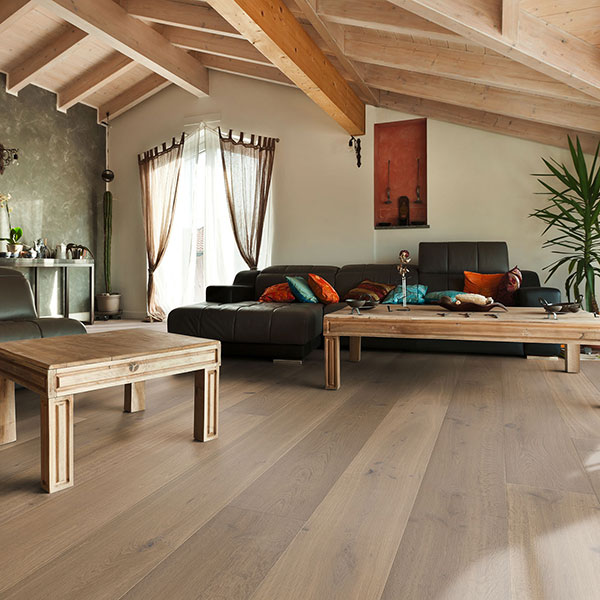Hardwood
Real wood, by design…
Solid Hardwood
Solid hardwood is viewed by some as being the one and only true wood flooring. It is a solid product from top to bottom and side to side. The planks are usually about ¾” thick with a width of 2” to about 5”.
There are many choices of wood species including red and white oak, maple, hickory, and pine. Most of the wood comes prefinished for convenience but unfinished wood is available.
One advantage is the solid hardwood can be sanded but may become too thin after years of sanding, compromising its structural integrity.
Long Lasting
Well-maintained solid hardwood will last for decades. Remember, moisture is the enemy of this organic product. That’s why it is not recommended for bathrooms, basements, or other areas where moisture is often expected. Ideal areas are in living areas, bedrooms, hallways, dining rooms.
Solid wood will return a high value many years to come.
Engineered Hardwood Flooring Is Real Wood
Engineered wood is real wood. The surface of the floor is a thin (veneer) layer of wood usually from about 1mm to 6mm. Everything below the surface is high-quality plywood. While it appears to be a “cheat” to have plywood under the veneer, the plywood provides a dimensional strength that solid hardwood does not have, creating lasting beauty and value. Engineered hardwood also has a greater resilience to water.
Many species are available. Some of the most popular wood species are red oak, hickory, and Brazilian Cherry.
Most engineered wood floors are pre-finished and are not designed to be sanded because the wear layer is thin or they have a special finish that can not easily be duplicated.
Easier to Install
They may be easier to install than solid hardwood as you have a greater range of installation methods: stapling or nailing, click, or glue.
Engineered hardwood is for those who love the look of wood without some of solid woods drawbacks.







